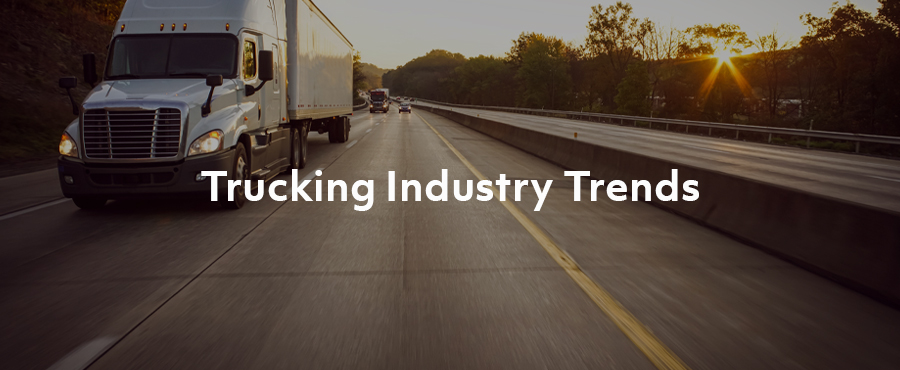
As a player in the transportation industry, you impact every person’s daily experience — from the coffee mugs they use, to the jewelry they’re wearing, to the garden hoses in their backyards — all were delivered by a truck.
A dominant contributor to the U.S. economy, trucks moved 11.5 billion tons of freight (71 percent of the nation’s tonnage) and employed 7.8 million people in trucking-related jobs in 2018, according to the American Trucking Association’s (ATA) American Trucking Trends 2019 report.
And, as e-commerce players like Amazon and Hello Fresh increasingly deliver more of the nation’s goods directly to consumers’ doors, it’s no surprise that the transportation industry is growing. Yet, despite growth of $100 billion in revenues from 2017 to 2018, many transportation companies still struggle to remain profitable due to rising costs. There are a variety of factors at play that are driving costs, and in this blog, we highlight three of them.
1. Driver Shortages
Theories abound about why the trucking industry is facing driver shortages: increased demand from a strong economy, low unemployment, retirement rates, or the stigma of driving a truck. Regardless the reasons, the numbers don’t lie. There is currently an estimated shortage of 60,000 drivers and that number may bloom to 160,000 by 2028, according to Bob Costello, chief economist with the ATA.
Responses to the shortage vary. Some trucking companies, like Swafford Trucking, have responded by raising wages. Gordon Klemp, president of the National Transportation Institute, estimates that the increase is close to 10 percent on average, according to reporting by NPR. This puts the average driver salary at about $60,000. Truckers are also demanding better 401(k) packages, health care, and paid time off which adds to these human capital expenses.
In other cases, transport companies are increasing their hauling fees, forcing their customers to choose between smaller profits, or passing along the higher costs to consumers. Still others are turning away jobs entirely.
To address the shortage, the South Carolina Trucking Association (SCTA) has begun heavily recruiting in high schools. “We want to show these kids these are good, All-American jobs,” said the SCTA President Rick Todd. Others are getting creative by looking at autonomous trucks and other technology to help fill the gap.
2. Rising Insurance Premiums
Commercial auto insurance (which includes trucking) continues to be one of the worst-performing segments of the insurance industry. A 2017 study by the American Transportation Research Institute (ATRI), An Analysis of the Operational Costs of Trucking, reveals the trucking industry had seen four straight years of insurance cost increases, rising as much as 30 percent, and that those trends are expected to continue. This, despite the fact that the industry is attempting to lower their premiums by investing in new technologies to improve safety, compliance, and operational efficiencies.
One factor driving increases is the recent spate of large claims. In 2017, nearly 5,000 large trucks and buses were involved in fatal crashes, an increase of 42 percent from a low of 3,432 in 2009. These incidents resulted in some major insurance payouts that, in turn, prompted several insurers to exit the market completely and others to raise their premiums.
“It’s not a universal rate increase across the board but accounts that have issues where there’s loss issues or driver issues or compliance issues, they’re going to see significant rate increases,” said Michael Birge, president of HUB International’s transportation division in the Insurance Journal.
These changing dynamics bring new risks and opportunities to commercial motor vehicle (CMV) operators. However, since insurance costs represent the largest operational expense increase, according to the Insurance Journal, trucking firms need to find ways to contain them.
3. Investment in New Technologies
One way the transportation industry is addressing the issue of rising costs is by turning to modern technologies focused on increasing safety, streamlining compliance management, and generating efficiencies. These technology investments are causing at least a short-term increase in costs as the price tag for a new tractor-trailer rig goes up to accommodate the new technology and as companies absorb the costs of moving from a legacy system to more modern technology platforms. The industry is most certainly banking that these upfront investments will create significant savings down the line. But in the short term, they are adding to the expense equation.
For more detail about the changing transportation industry, check out our latest white paper, A Practical Approach to Insurance and Regulatory Compliance for Transportation Companies.